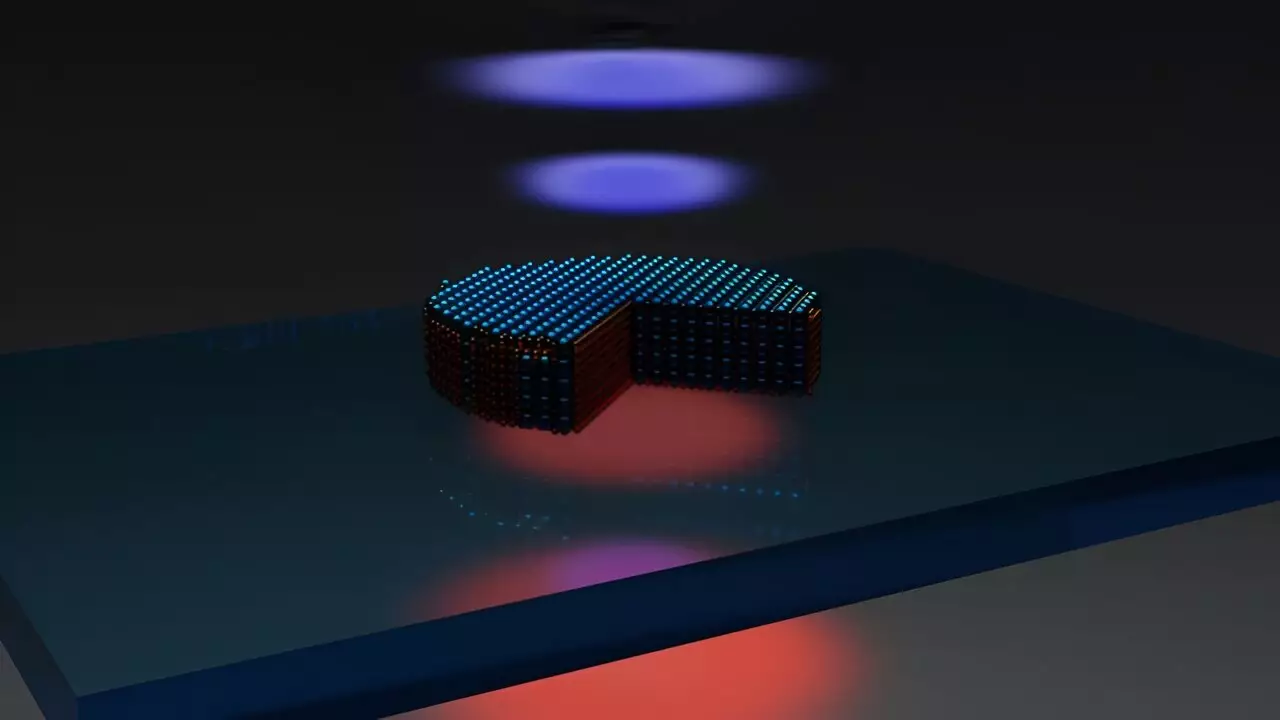The realm of photonics has witnessed remarkable advancements thanks to the intricate relationships between light and matter. These interactions have not only propelled developments in communications and medical technologies but have also given birth to novel applications in laser and quantum science. A significant stride has recently emerged from the Department of Physics at Chalmers University of Technology. Here, researchers have successfully merged the fields of nonlinear optics and high-index nanophotonics into a singular disk-like structure, indicating exciting possibilities for future applications.
The pioneering research led by Dr. Georgii Zograf emphasizes a transformative shift in photonics. The nanoobject, while markedly smaller than the wavelength of light, displays impressive efficacy in light frequency conversion. Zograf highlights a staggering 10,000-fold improvement in efficiency compared to similar unstructured materials, asserting that such nanostructuring is crucial for optimizing performance. This innovation not only underlines the potential of miniaturized photonic devices but also propels our understanding of nonlinear optical properties facilitated by state-of-the-art materials.
Central to this advancement is the use of transition metal dichalcogenide (TMD), specifically molybdenum disulfide. Renowned for its unique optical characteristics at room temperature, this atomically thin material posed challenges due to its difficulty in stacking without compromising its nonlinear properties. Remarkably, the researchers have crafted a nanodisk from layered molybdenum disulfide that retains critical symmetry aspects, thus preserving its nonlinear optical behavior. This achievement not only maintains but amplifies the material’s inherent optical properties, outlining a revolutionary approach to nanostructuring.
The high refractive index of the molybdenum disulfide nanodisk permits light compression within a compact medium, enhancing the performance of optical applications. The ability to transfer this nanostructure onto various substrates, regardless of lattice alignment, opens new avenues for integration into diverse optical systems. The disk also excels at confining electromagnetic fields, facilitating phenomena such as second-harmonic generation—a process pivotal in producing doubled frequency light. This nonlinear optical characteristic is analogous to techniques employed in high-energy laser systems, cementing the nanodisk’s place in advanced photonic applications.
One of the standout features of this research is the drastic reduction in scale. While existing nonlinear optical systems often operate at centimeter dimensions, the Chalmers team’s creation measures merely 50 nanometers, an astonishing reduction that is approximately 100,000 times thinner. This redefinition of size in nanophotonics sets the stage for developing more compact and efficient optical devices without sacrificing performance.
The implications of this revolutionary nanodisk extend beyond mere theoretical interest. The resonant properties of TMD materials, combined with their minute dimensions, suggest vast potential for their integration into optical circuits and other photonic applications. Professor Timur Shegai, a leader in the research effort, underscores the promise of this work to propel both quantum and classical nonlinear nanophotonics forward. By harnessing the unparalleled characteristics of these materials, researchers envision possibilities such as miniaturized nanodisk arrays and metasurfaces geared towards complex optical functions.
As this research marks a foundational step toward more sophisticated nonlinear optical experimentation, the potential to fabricate highly efficient, compact photonic devices is now closer to realization. The Chalmers University team’s innovative approach to stacking and structuring molybdenum disulfide paves the way for advancements that might revolutionize entire fields. With only the surface scratched, the ongoing exploration of these miniature photonic marvels holds promise for future technologies and sophisticated applications, marking an exciting era for photonics research. The work done here exemplifies not only what has been accomplished but also hints at the groundbreaking innovations that lie ahead in the vast landscape of optics and photonics.


Leave a Reply